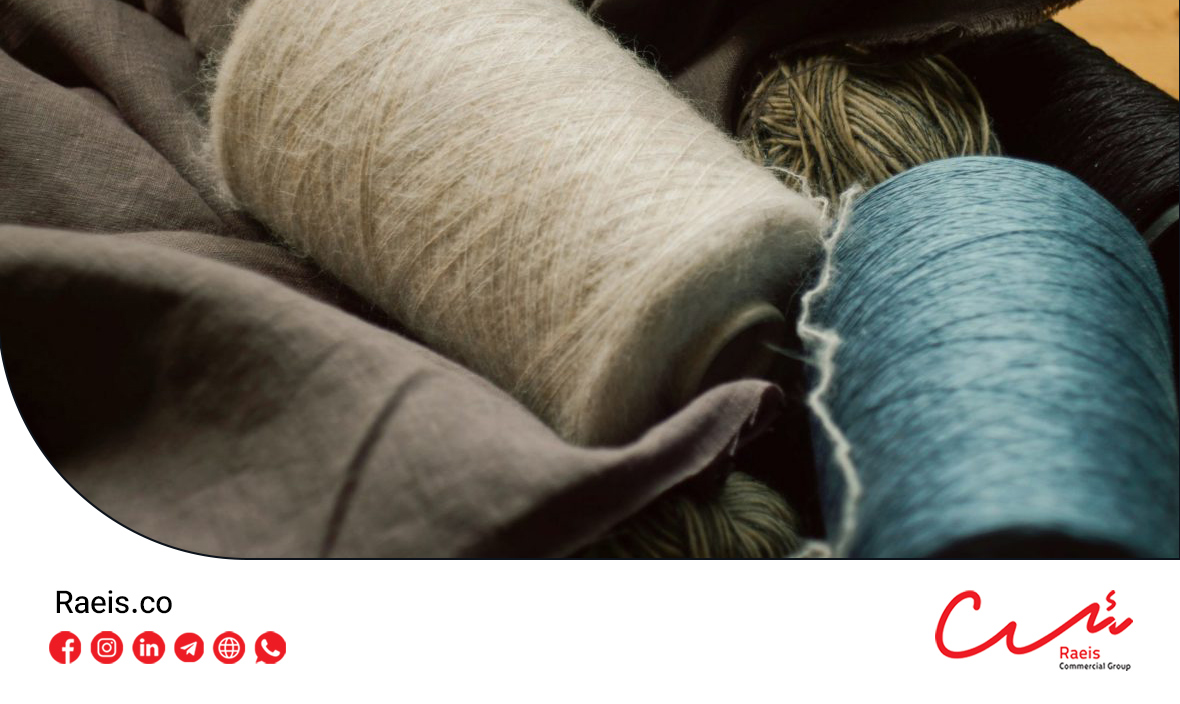How to Identify High-Quality Jute Yarn

Jute yarn, one of the world’s most popular natural fibers, has gained significant attention in recent years. Due to its unique properties, such as high durability, biodegradability, and affordability, jute yarn finds applications in various industries, including textiles, packaging, interior decoration, and even the food sector. However, today’s market offers a wide range of jute yarns with varying quality levels, making it challenging for buyers to distinguish high-quality yarn from lower-quality alternatives.
Determining the quality of jute yarn is critical because the right choice directly impacts the final product’s quality, reduces costs, and enhances customer satisfaction. Raeis Industrial Group, a reputable supplier of yarn and fibers, strives to assist manufacturers and business owners with expert advice and high-quality products. This article explores key strategies and considerations for identifying high-quality jute yarn.
Understanding Types of Jute Yarn
Jute yarn is generally categorized into two main types, each with distinct characteristics and applications:
Raw Jute Yarn
This type of yarn is made directly from jute fibers and retains its natural color. It is highly durable and primarily used in industries such as packaging and interior decoration.
Dyed Jute Yarn
Dyed jute yarn is derived from raw jute yarn through a dyeing process. Its diverse color options and visual appeal make it a popular choice in fashion and interior decoration industries.
Visual Characteristics of Jute Yarn
The quality of jute yarn can often be assessed by examining its visual features. Key attributes to consider include:
Color
High-quality jute yarn should exhibit a natural and uniform color. In the case of dyed jute yarn, the color should be even and free of unnatural spots. Extremely bright or artificial-looking colors may indicate lower quality.
Texture
The texture of jute yarn should be smooth and free from excessive fuzz. Poor-quality yarn may have irregular textures and excessive fuzz, which can negatively affect the quality of finished products. Inspecting the yarn’s texture can help determine its suitability for your project.
Thickness
High-quality jute yarn features consistent thickness throughout. Low-quality yarn may have varying thicknesses, appearing thinner in some areas and thicker in others. Uniform thickness is essential for diverse projects.
Strength and Durability Testing
An effective way to evaluate jute yarn quality is by testing its strength and durability. To assess this, gently pull the yarn to see if it breaks easily. High-quality jute yarn should demonstrate strong tensile strength and withstand stretching without breaking or showing damage. Conducting laboratory tests, when possible, can provide a more precise evaluation of the yarn’s quality.
Packaging and Presentation
The packaging and presentation of jute yarn can also indicate its quality. High-quality jute yarn is typically sold in standard, durable packaging designed to protect it during transportation. Poor or unprofessional packaging may suggest lower product quality.
Additionally, the packaging label should include detailed information such as the manufacturer’s name, production date, yarn type, and other relevant specifications. Missing or inaccurate information could indicate lower-quality products. Raeis Industrial Group ensures buyers receive high-quality products with proper packaging and clear labeling.
Quality Testing and Standards
Establishing quality control laboratories and defining specific standards for jute yarn can significantly aid in distinguishing high-quality products. Some common quality tests include:
Tensile Strength Test
Tensile strength testing is a key metric for assessing jute yarn quality. This test measures the yarn’s resistance to pulling forces. High-quality jute yarn generally exhibits high strength and excellent tensile properties, reflecting the fiber’s quality and production process.
Color Fastness Test
Color fastness testing evaluates the yarn’s resistance to fading or bleeding under various conditions, such as exposure to light and moisture. High-quality jute yarn should maintain its color even when subjected to challenging environments.
Moisture Absorption Test
High-quality jute yarn should demonstrate appropriate moisture absorption capabilities. Conducting moisture absorption tests can help determine whether the yarn is suitable for use in humid or dry conditions.
Price and Market Considerations
Another factor to consider when purchasing jute yarn is its price. While lower prices may indicate inferior quality, this is not always the case. Some manufacturers utilize cost optimization techniques to produce high-quality yarn at competitive prices.
Conclusion
Identifying high-quality jute yarn is a critical and detailed process requiring attention to various factors. This article highlighted strategies and considerations for determining jute yarn quality, including understanding yarn types, examining visual characteristics, conducting strength tests, evaluating packaging, performing quality tests, and considering price and market dynamics.
Purchasing high-quality jute yarn not only enhances the quality of final products but also helps save costs and improve consumer experiences. Awareness of these considerations and consulting reputable suppliers like Raeis Industrial Group can assist you in selecting the best options. By adhering to these guidelines, you can confidently distinguish high-quality jute yarn from lower-quality alternatives and produce durable, high-quality products.
Given the diverse market and varying consumer needs, the importance of choosing high-quality jute yarn and sourcing it from reliable suppliers is more significant than ever. Raeis Industrial Group, a leading supplier in this field, offers high-quality products and expert consultations to meet customer demands effectively. With the insights provided in this article, you can confidently navigate the process of purchasing jute yarn and achieve greater success in your projects.

